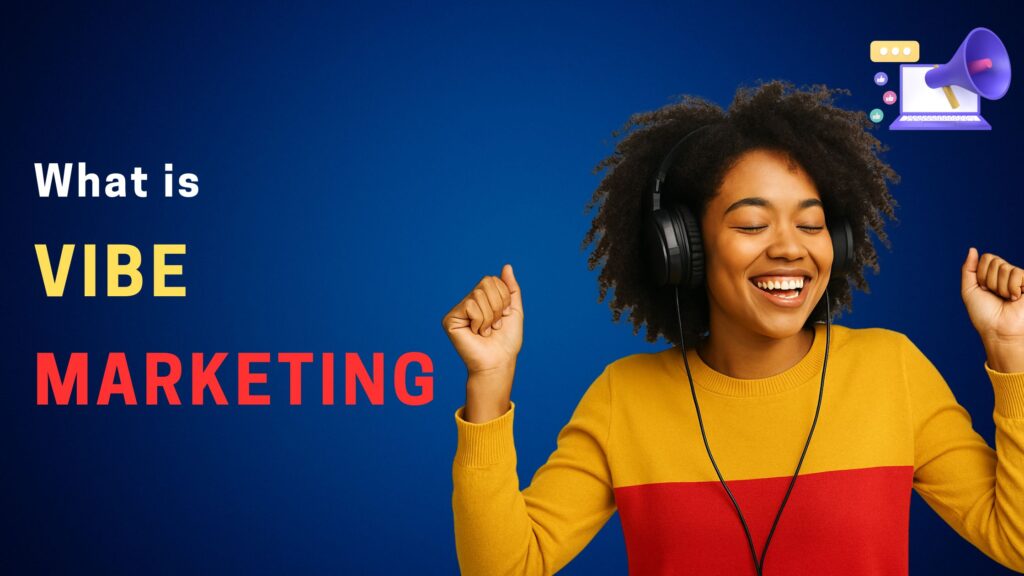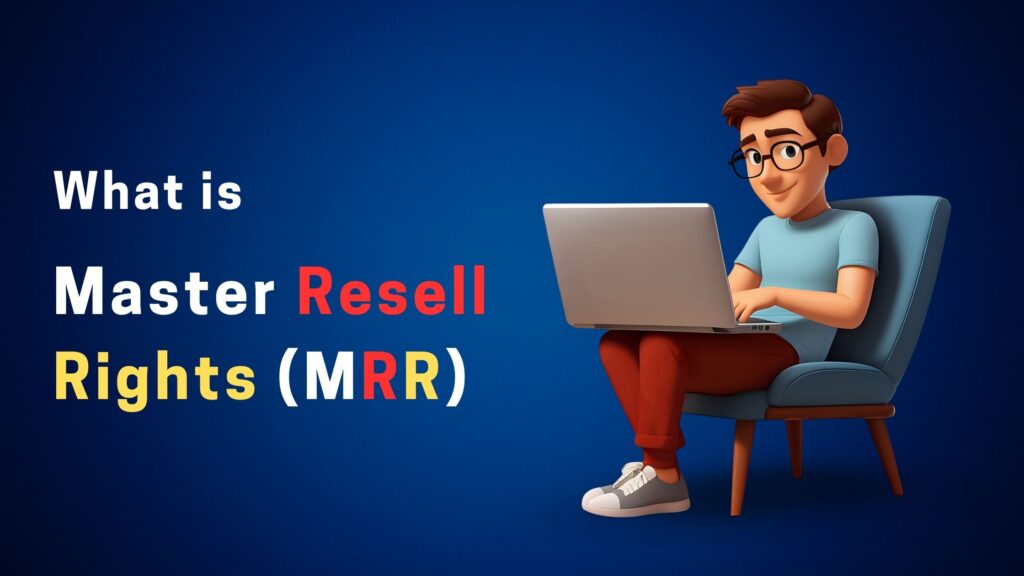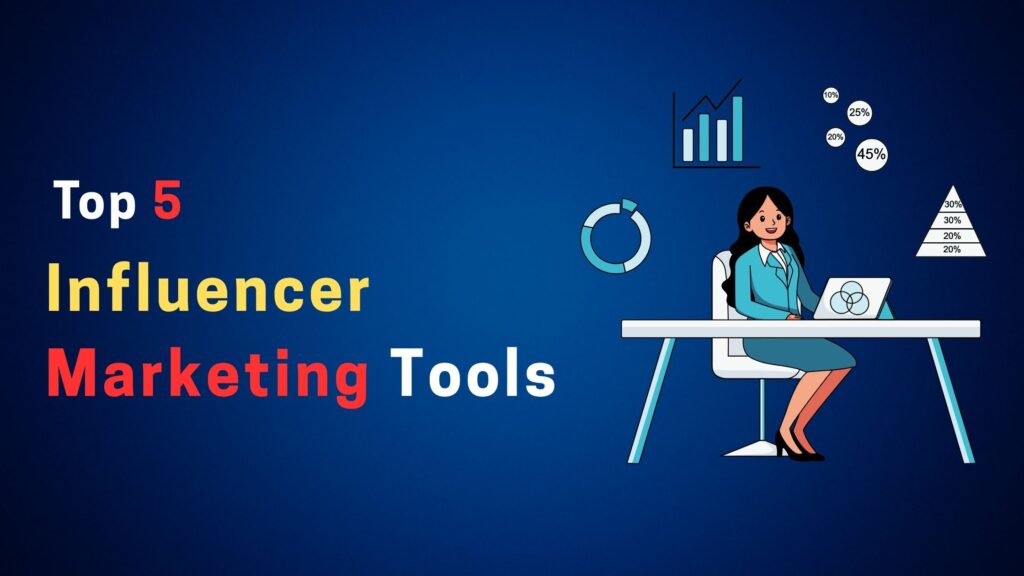Vibe marketing is becoming one of the most talked-about trends in the world of digital marketing. According to some sources, searches for the term “vibe marketing” increased by 686% over the past year.
Also, nearly 47% of Fortune 500 companies had adopted some form of vibe marketing by Q3 2024.
In simple terms, we can say that more brands are using vibe marketing, mainly focusing on emotional connection and culture rather than just product specifications, to build stronger relationships and stand out.
What Is Vibe Marketing?
Vibe marketing is a style of brand communication where the focus is less on the features of a product and more on the feeling, identity, and culture that a brand evokes.
It’s about answering “What kind of vibe do we give off?” rather than “What can we sell?”In simple words, our focus on our customers’ vibe means understanding what they actually like.
For example, instead of saying “this smartphone has a 48MP camera”, a brand using vibe marketing might show how the phone fits into a fun, creative lifestyle, what kind of moments people capture, and what community they belong to.
In this way, a digital marketing strategy oriented around vibes appeals to emotions, values, and culture. A strong SEO agency or brand working with meta ads and other marketing tools might adopt vibe marketing by building campaigns that feel relatable, human, and timely rather than just “buy now” and “order now” messages.
How Vibe Marketing Actually Works for Brands
Here are the details on how Vibe marketings work for new startups and popular brands.
Define the brand’s “vibe”: What mood, identity, culture, or feeling the brand wants to represent (e.g., playful rebel, calm companion, bold innovator, etc).
Create content aligned with that vibe: Always focus on visuals, tone of voice, stories, social posts, and ads that make the audience feel rather than just inform.
Use channels and interactions that match the culture: Upload quick reaction posts, meme-style, trends, TikTok style, and authenticity. For example, the brand Duolingo used its mascot for playful TikTok content that felt more like entertainment than learning.
Amplify via marketing tools and scale: Use marketing tools like automation, social scheduling, Meta ads (ads on Meta platforms like Facebook/Instagram) to scale the vibe, but still sound authentic. Because in digital marketing, consistency and tone matter.
Measure emotional connection and culture fit: While traditional metrics (clicks, conversions) remain important, vibe marketing also looks at engagement, shareability, and community loyalty. You might work with an SEO agency to measure organic growth, brand mentions, and tone across search and social.
Different Types of Vibe Marketing

Every brand has its own vibe, the feeling it gives people. Some brands make you feel fun and free, while others make you feel safe and inspired.
Here are a few common types of vibe marketing with simple Indian business examples you will easily relate to:
1. The Playful Rebel
These brands speak boldly, use humor, and don’t follow boring rules. They often stand out by being different and fun.
Example: Zomato and Dunzo both use witty social media posts and memes to connect with young audiences. Their tone is playful, casual, and even sarcastic at times. People follow them not just for updates, but for entertainment too.
2. The Cozy Companion
These brands make you feel comfortable and cared for like a friend who’s always there.
Example: Amul has done this for decades. Its cartoon ads give a homely and nostalgic vibe. Similarly, Paper Boat connects emotionally through stories of childhood memories and simplicity.
3. The Aspirational Guide
These brands inspire people to dream bigger and improve their lifestyle. They focus on motivation and success.
Example: CRED is a good example, its vibe says “exclusive, premium, and successful.” It doesn’t just sell a service, it sells a lifestyle that people want to be part of.
Similarly, boAT promotes an energetic and youthful vibe, encouraging people to “plug into nirvana.”
4. The Cultural Insider
These brands deeply understand their audience’s culture, language, and online trends. They speak like their users, not like marketers.
Example: Swiggy Instamart often joins viral internet trends or memes in its marketing, making it feel like a part of everyday Indian social media culture.
Another example is Fevicol, it uses Indian humor, local situations, and desi creativity to stay relatable across generations.
5. The Visual/Experience-First Brand
These brands focus on look, feel, and design. Their vibe is all about the visual experience.
Example: TATA Cliq Luxury and Nykaa both maintain a clean, classy, and elegant aesthetic. Their visuals, packaging, and ad style all reflect a premium vibe that appeals to modern Indian shoppers.
Choosing which type fits your brand (and your audience) is a big step. Once chosen, all your meta ads, your social posts, and your SEO content should reflect it.
How Is It Different From Other Marketing
Let’s compare vibe marketing vs more traditional marketing:
Traditional Marketing:
- They focus on features, benefits, and product specifications.
- Their Primary Message is “Buy Now and Order Today because it works.”
- They are more polished, formal, and focus on one-way interactions.
- They mainly run fixed campaigns and longer cycles repeatedly.
- They work on Product ads, target keywords, ad copies, etc.
Vibe Marketing:
- They mainly focus on feeling, identity, and culture.
- Their primary Message can be “Join this feeling, this tribe.”
- They focus on more casual, conversational, interactive content for users.
- They move fast, are more agile, and work on trend-responsive.
- They work on user-generated content, funny memes, community engagement, and vibe-driven content.
In practice, a digital marketing campaign built by an SEO agency might target keywords, meta ads, and “best phone under X”.
But in vibe marketing, you might instead target “this is the phone people who travel and create moments use” and show the lifestyle, not the specs. That’s the major difference.
Common Mistakes to Avoid in Vibe Marketing
When brands try vibe marketing, they commonly avoid the following mistakes:
Trying to be “cool” without authenticity: If the vibe feels forced or mismatched to your brand or audience, it won’t work accurately.
Copying others: Just because another brand does playful content doesn’t mean you should also create the same. The vibe must match your audience. You will need to create content according to your audience’s interests.
Ignoring substance: Vibe helps you connect, but you still need a good product or service, clear value. Many say vibe marketing is “just hype” if there’s no substance. But Vibe marketing works only if it’s backed by real audience insight.
Inconsistent tone across touchpoints: If your social vibe is playful but your website and meta ads look corporate, the inconsistency confuses people.
Over-automation losing human touch: Using marketing tools and automation is good, but if everything feels robotic, you lose that vibe of authenticity.
The Final Words
Vibe marketing offers brands a powerful way to connect emotionally with their target audience. In today’s world of digital marketing, consumers expect more than product features, they expect resonant identity, relatable value, and real culture.
Whether you are running meta ads, working with an SEO agency, or using advanced marketing tools, embedding the right vibe can help your brand stand out and forge deeper loyalty.
If your brand is ready to adopt this fresh approach and you need support shaping your vibe, Cortex Infotech is here to help. Let’s build your brand’s story, tone, and strategy together so your audience doesn’t just hear you, they feel you.
FAQs About Vibe Marketing
What does vibe marketing mean in simple words?
Vibe marketing means promoting your brand by creating a feeling or emotion that connects with people. Instead of just selling products, it sells a mood or lifestyle that customers relate to.
Why is vibe marketing important for brands today?
Because people don’t just buy products anymore, they buy stories and experiences. Vibe marketing helps brands build trust and emotional connection, especially with Gen Z, who value authenticity.
Can small businesses use vibe marketing too?
Yes! Even small brands can create their own vibe by using social media creatively, showing real stories, and keeping a consistent tone. You don’t need a big budget, just a clear personality and honesty.
What are some popular examples of vibe marketing in India?
Brands like Zomato, Amul, Boat, Paper Boat, and CRED are great examples. Each one has a strong and clear vibe that connects emotionally with its audience.
How can I find the right vibe for my brand?
Start by thinking about your audience, what they love, how they talk, and what they believe in. Then match your visuals, tone, and message to that energy. You can also test different types of content to see what feels right.



